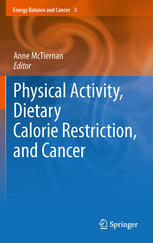

Most ebook files are in PDF format, so you can easily read them using various software such as Foxit Reader or directly on the Google Chrome browser.
Some ebook files are released by publishers in other formats such as .awz, .mobi, .epub, .fb2, etc. You may need to install specific software to read these formats on mobile/PC, such as Calibre.
Please read the tutorial at this link: https://ebookbell.com/faq
We offer FREE conversion to the popular formats you request; however, this may take some time. Therefore, right after payment, please email us, and we will try to provide the service as quickly as possible.
For some exceptional file formats or broken links (if any), please refrain from opening any disputes. Instead, email us first, and we will try to assist within a maximum of 6 hours.
EbookBell Team

4.8
14 reviewsThis book focuses on how obesity and sedentary lifestyles adversely affect cancer risk and survival for individuals as well as mechanisms that may underlie those associations. However, evidence is accumulating rapidly on the cost of obesity and sedentary lifestyles to society. For example, obesity is estimated to lead to costs of $147 billion in the US.6 While research on individual level interventions for weight loss and increasing physical activity have identified efficacious approaches, these changes in behavior are not maintained by many in the current environments in the US and worldwide that promote weight gain and inactivity. Research on environmental and policy approaches for addressing these problems at the societal level is needed7, 8 and is a major component of the President’s Report on Childhood Obesity released in April 2010. The epidemic of overweight and obesity and the increasing sedentary lifestyles will impact the magnitude and quality of the cancer problem globally. Increasing the knowledge of scientists, clinicians, and policy experts will aid in defining new prevention and treatment methods, to reduce the impact of energy balance on cancer, with the goal to eventually reduce the burden of cancer. Hopefully, this knowledge can be translated into incentives for the general public, persons at high risk, and cancer patients and survivors to increase physical activity, reduce excess weight, and maintain energy balance lifelong.